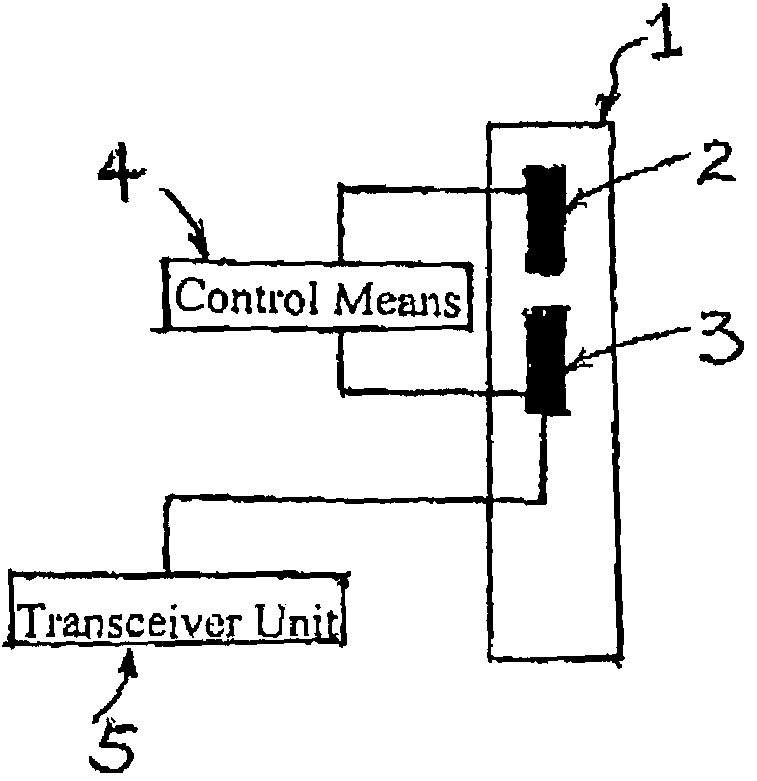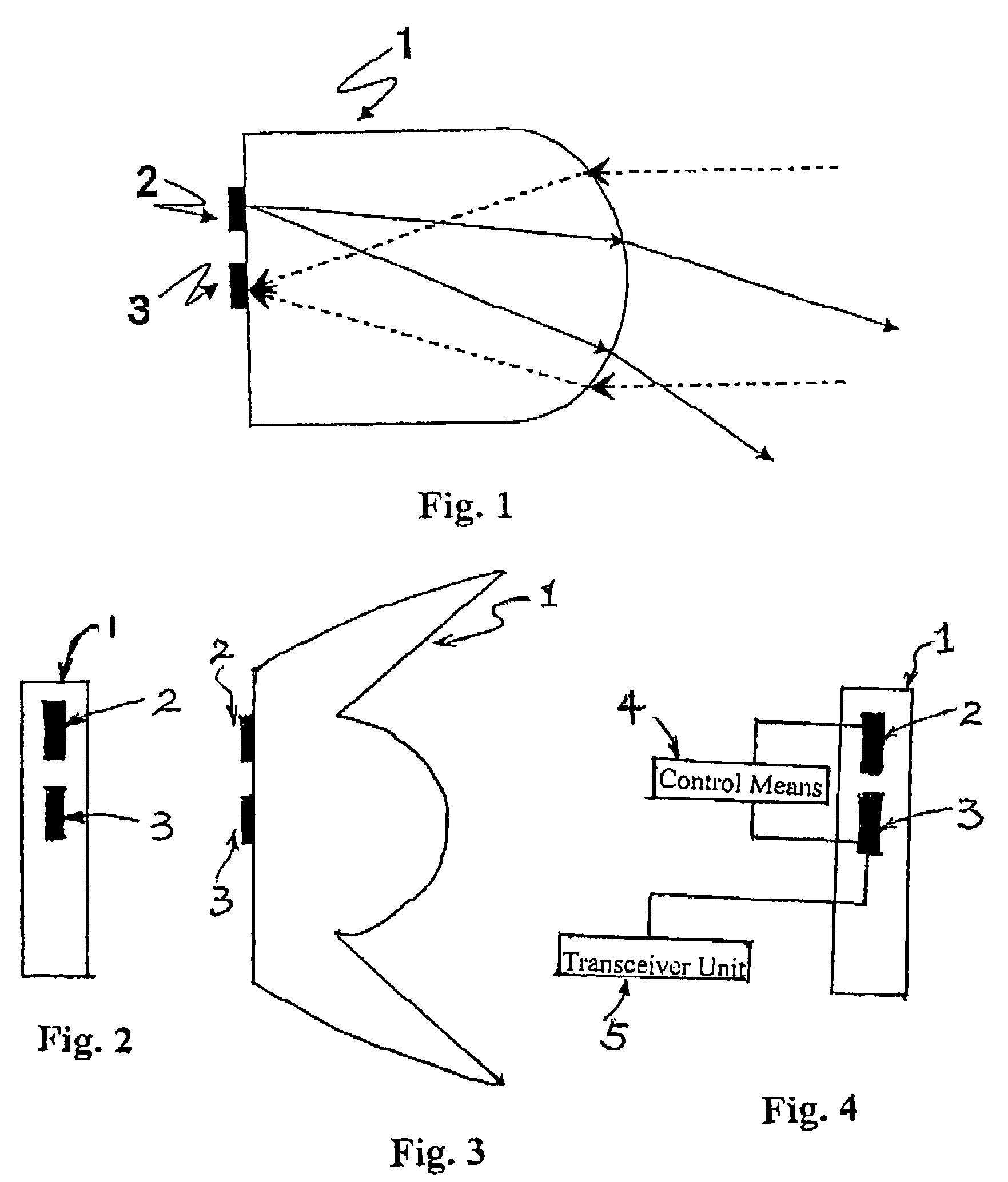Multifunctional illumination device
a multi-functional, illumination device technology, applied in lighting support devices, lighting and heating apparatuses, instruments, etc., can solve problems such as restricted variability in the design of possible beam paths
- Summary
- Abstract
- Description
- Claims
- Application Information
AI Technical Summary
Benefits of technology
Problems solved by technology
Method used
Image
Examples
Embodiment Construction
[0021]The multifunctional illumination device can be fashioned in a particularly advantageous and compact way aimed at efficiency by assigning at least individual optical systems a number of semiconductor light sources or sensor elements. In such a case, one optical system acts on the individual light sources and sensors in a different way such that these exhibit different emission characteristics and reception characteristics. In practice, this can frequently be utilized extremely advantageously, for example by positioning a semiconductor light source at an optical system such that when functioning as a lower beam it illuminates the area right in front of a vehicle, while the sensor is positioned at the optical system such that can detect signals from regions further away in front of the vehicle. Such an arrangement is shown by way of example in a diagrammatic illustration of FIG. 1 relating to this application. FIG. 1 shows the cross section of an optical system (1) that is genera...
PUM
 Login to View More
Login to View More Abstract
Description
Claims
Application Information
 Login to View More
Login to View More - R&D
- Intellectual Property
- Life Sciences
- Materials
- Tech Scout
- Unparalleled Data Quality
- Higher Quality Content
- 60% Fewer Hallucinations
Browse by: Latest US Patents, China's latest patents, Technical Efficacy Thesaurus, Application Domain, Technology Topic, Popular Technical Reports.
© 2025 PatSnap. All rights reserved.Legal|Privacy policy|Modern Slavery Act Transparency Statement|Sitemap|About US| Contact US: help@patsnap.com


